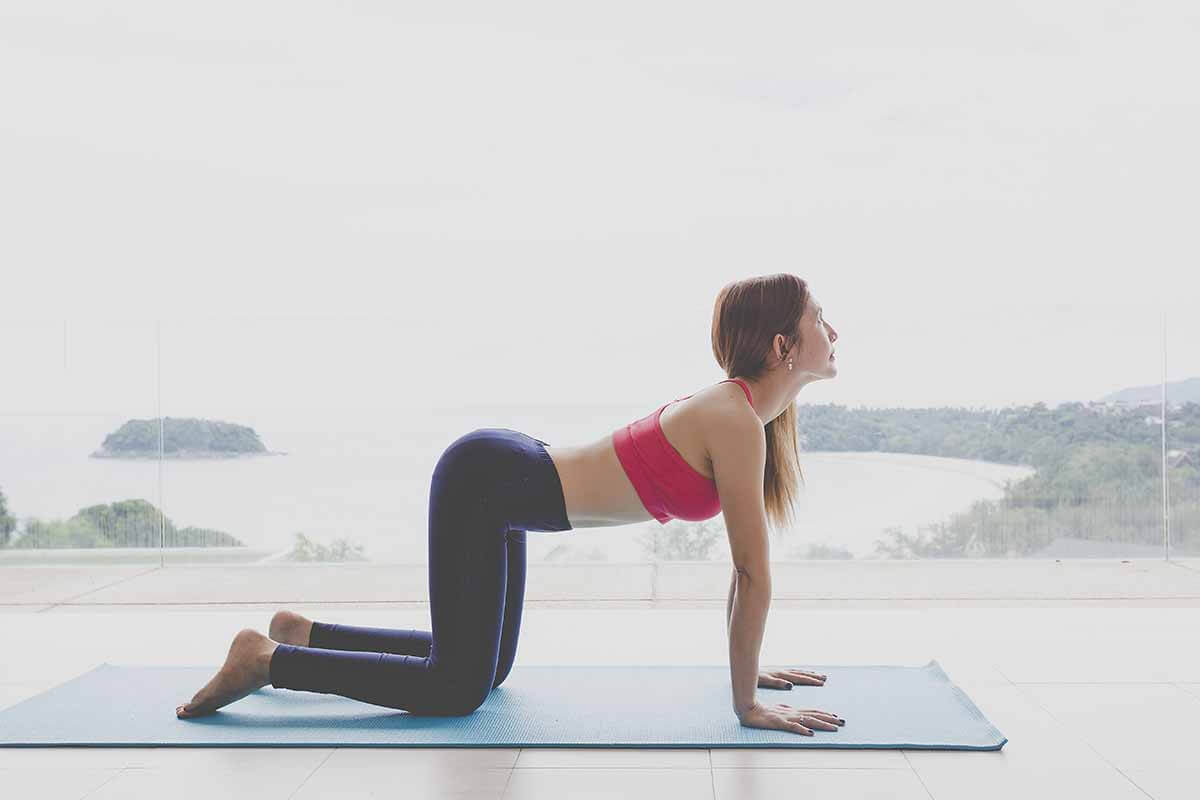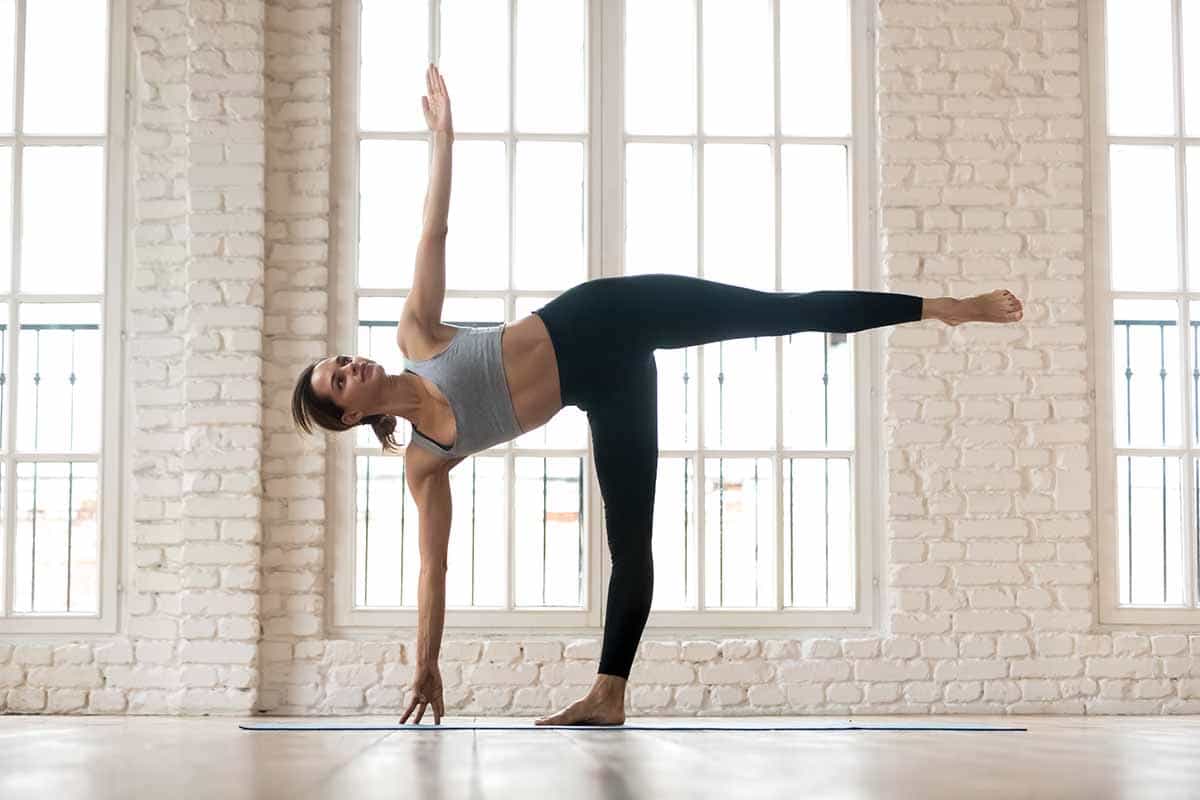
lmost everyone will suffer from lower back discomfort at some point in their lives. While there are various possible causes for this issue, tight muscles and a weak core are the two primary contributors to pain and lower back problems.
In total, yoga is a good alternative treatment for lower back pain. Countless studies have demonstrated the effectiveness of the ancient practice, which promotes stretching, strength, and flexibility, in relieving back pain and improving function.
If you are one of the millions of Americans who suffer from lower back pain on a regular basis, you may benefit from practicing yoga. Here are 7 yoga poses you can try at home to improve function and reduce lower back pain.
Article Topics
Why Turn to Online Yoga Resources for Lower Back Pain?
Somewhere in the midst of the digital age and the global pandemic, the need for online yoga resources skyrocketed.
Millions of people today spend hours upon hours at a desk, and often don’t have the time to take an in-person class or do the work needed to keep their body functioning optimally. That’s where online resources can be hugely beneficial.
Poor posture is one of the most prevalent causes of lower back pain, and certain daily actions, such as sitting, standing, or moving heavy objects, can aggravate your discomfort. This is where yoga comes in. Yoga helps to enhance flexibility and muscular strength. The practice, which can be done from the comfort of your own home, can also help reduce tension and stress.
However, before you begin your practice, you should keep a few things in mind to avoid additional harm. Always get the advice of a medical expert before beginning any physical activity, especially if you have persistent lower back discomfort. Seeking advice from a trained yoga teacher can also help, as they know the systems in the body and how movement affects them.
Anatomy is a Critical Study Element in Yoga Teacher Training
The study of anatomy in yoga is a one-of-a-kind approach. While traditional human anatomy studies focus on the positioning of the bones and systems within the body, yoga demands a comprehension of anatomy as well as the ability to apply that knowledge to movement.
Instructors learn how to apply anatomy to real-life scenarios. To teach the technique, an instructor must understand how the body moves and responds to loads and demands successfully and efficiently. All Yoga instructors must grasp what is happening within the body to enhance blood flow to each muscle and how this affects the body. They must understand what is being addressed in a particular position in order to adjust and alter the pose as needed for students with limitations.
Each teacher training program has various standards for how much anatomy should be covered. However, the standard practice for most yoga teacher training programs is to include at least 20 hours of anatomy—preferably functional anatomy. Even if a teacher’s main emphasis is on the spiritual side of the practice, the key thing they’ll be doing is leading students through a sequence of movements on the mat. Delivering appropriate movement cues involves a thorough understanding of the body and how it moves.
7 Yoga Poses for Lower Back Pain
Yoga positions for lower back pain might be beneficial if you spend a lot of time slumped in a chair behind a computer or standing for long periods. According to research, folks who practice yoga regularly have less discomfort and better flexibility and movement. Here are the top seven positions for lower back discomfort.
1. Cat and Cow Pose
Cat-cow is a gentle flow that works as a great warm-up for your spine as it stretches the back and neck while bringing the spine into correct alignment. This can assist in decompressing intervertebral discs and reducing back discomfort.
Begin in table position on your hands and knees with a neutral spine. Lift your sit bones and head high, drive your chest forward, and allow your belly to sink as you inhale and enter into cow pose. Flow into cat position as you exhale, curving your spine outward, tucking your tailbone in, dropping your head towards the floor, and dragging your pubic bone forward.

2. Sphinx Pose
Sphinx pose is a great beginner move that works the shoulders and lower back muscles. It helps to establish and maintain a healthy lower back curve, as well as relieve lower back pain and stiffness.
Start off laying on your stomach. With your forearms, palms, and elbows flat on the ground, push your chest off the floor. Your back should arch slightly, and your pelvis should not lift off the floor. Hold the pose for a few breaths, then release.

3. Crescent Lunge
Crescent lunge is an important stretch for those who spend much of their day sitting. When your hip flexors are operating appropriately, they can produce balance, but when they are tight, they can create tension and even lead to sciatica. This pose stretches out the hip flexors, spine, and quadriceps and engages deep core muscles for improved stability.
From a low lunge, drop your back knee to the mat, making sure to keep your right knee directly over your ankle. Inhale and raise your arms above your head, keeping them in line with your ears. Hold the pose for 5 breaths before switching to the other side.

4. Child's Pose
This is a great beginner’s yoga pose designed to relax the body while gently stretching the spine, thighs, hips, and ankles. Child’s pose can also help increase blood circulation and release tension in the lower back muscle, chest, and shoulders.
To enter the pose, come to your hands and knees. With your knees spread wide and the tops of your feet on the floor, lower your belly and chest between your thighs, bringing your forehead to the floor. Stretch your arms out in front of you, letting your neck and shoulders relax. Stay here for as long as you like.

5. Downward-Facing Dog
Downward dog opens up the chest and shoulders, which can help straighten your vertebrae and align your spine, resulting in better posture and possibly relieving lower back discomfort. This is also a fantastic lower body stretch. The inversion of downward dog promotes blood flow and allows you to properly stretch your hamstrings, calves, and ankles.
From hands and knees, press your palms and the balls of your feet into the floor to send your hips up and back. Slowly straighten the legs as you reach your tailbone high. Hold the position for 5 to 10 breaths, pedaling your legs (bend one knee, then the other) if you want to stretch your hamstrings, calves, and feet more.

6. Triangle Pose
Triangle pose is a terrific yoga stance for both beginners and experienced yogis. This basic standing position works your core muscles while stretching and lengthening your spine. Triangle posture is excellent for strengthening the back and legs, as well as for improving balance, stability, and flexibility.
Entering from Warrior II with your right leg forward, engage the thigh muscles and straighten your front leg. Extend your right hand toward the front of the room, then, hinging at the hips, lower your hand down onto your shin or ankle. Stack your shoulders and extend your left fingertips toward the ceiling, then swivel your head to look up at your fingertips. Stay for at least 5 breaths, then switch sides and repeat the position.

7. Pigeon Pose
Pigeon position is an excellent way to relax the hips and maybe avoid problems such as a strained lower back. Although it may not appear to be the most obvious posture to address a backache, tight hips can lead to lower back pain. Because pigeon position stretches hip rotators and flexors, it may relieve pain.
Pigeon pose may be approached in several ways. One of the most basic is to begin with Downward Facing Dog. Draw your right knee forward as if going into a lunge, then turn it out to the right, so your right leg is bent. Depending on your range of motion, the right shin may slant back towards the left hip or be more parallel to the front of your mat. Lower both of your legs to the ground and hold the posture for 5 to 10 breaths before switching to the opposite side. Repeat as required.

Final Thoughts
As much as we hate to admit it, posture is vital for preserving the health of your spine and those important lower back muscles. If your back is stiff, attempt one of the yoga poses listed above as a preventative strategy to keep your spine flexible and strong.
Plus you can also look at gentle hip mobility yoga poses that are gentle for your lower body too in that article!



